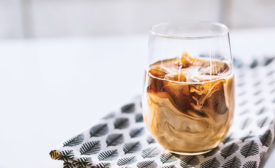Home » tea
Articles Tagged with ''tea''
The RTD tea category posted more modest growth, however.
Read More
Twrl Milk Tea combines RTD tea with pea protein
The offering comes in three flavors.
July 7, 2021
Ups and downs for ready-to-drink tea at retail
But ready-to-drink coffee posted strong dollar and unit sales growth.
September 25, 2020
Tea and coffee surf energy’s next big wave
Natural sources of caffeine, the beverages also are rich in antioxidants.
March 9, 2018
Using coffee and tea as ingredients
Americans drink tea and coffee because they enjoy the beverages and because they expect health benefits. Our roundtable discussion gives dairy processors ideas for creating foods with coffee and tea ingredients.
March 8, 2013
Stay ahead of the curve. Unlock a dose of cutting-edge insights.
Receive our premium content directly to your inbox.
SIGN-UP TODAYCopyright ©2025. All Rights Reserved BNP Media.
Design, CMS, Hosting & Web Development :: ePublishing











